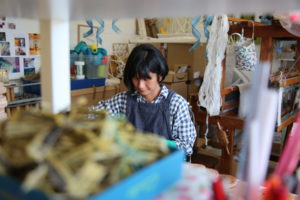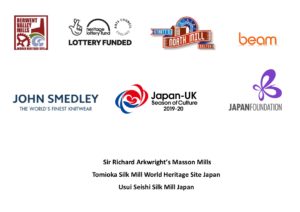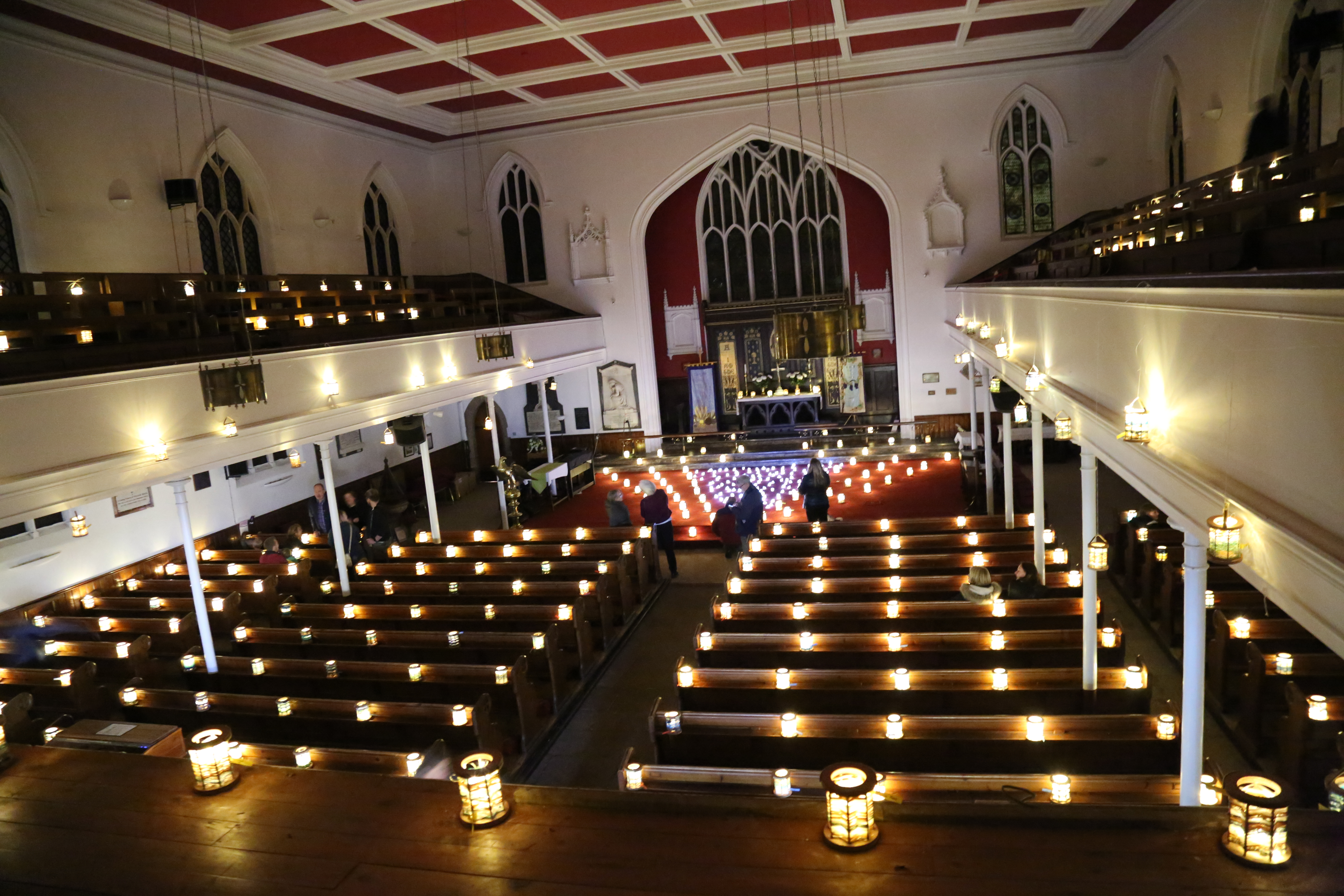Thread by Seiko Kinoshita
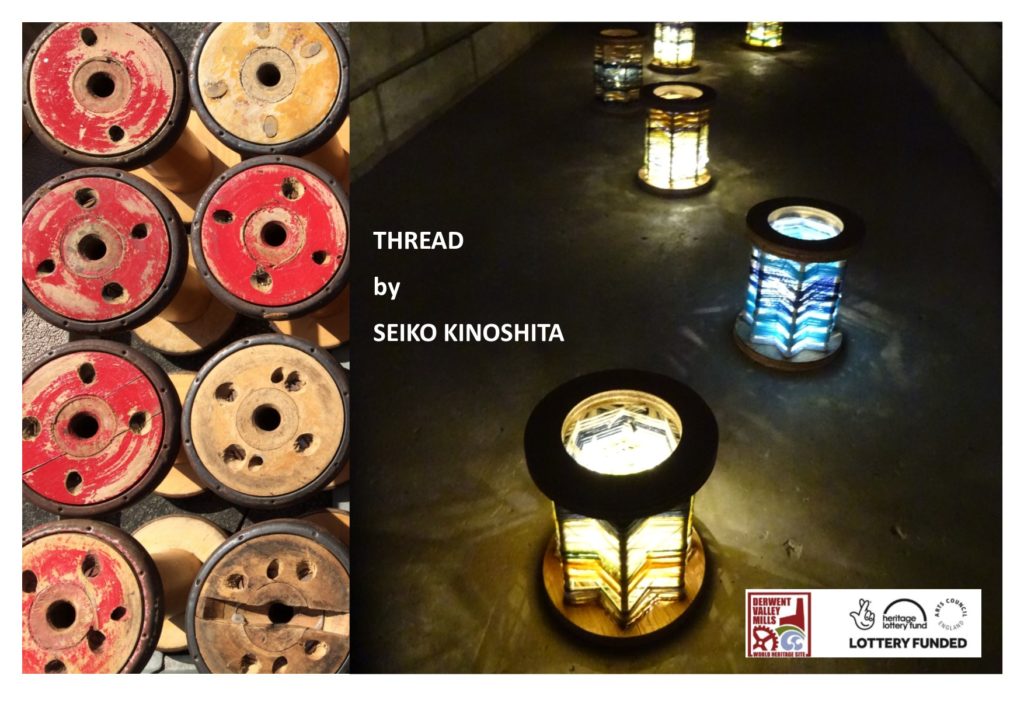
A contemporary textiles installation and atmospheric lantern lit walk was created for the Derwent Valley Mills World Heritage Site during October 2019.
This major commission, funded by National Lottery Heritage Fund and Arts Council England for the World Heritage Site’s Great Place Scheme was the second of 3 programmed arts commissions. Entitled “Thread” and the creation of Japanese textile artist Seiko Kinoshita, the commission drew attention to the rich heritage of Belper, in the heart of the World Heritage Site.
Seiko approached this by bringing together two concepts under the title THREAD. Her inspiration and vision combined a fascination with the history and stories of the World Heritage Site, along with the social stories of the communities that built up around the cotton mills and a desire to bring together the shared textile heritage of Japan and the UK.
Contemporary Textiles Installation
The first concept, “Threading Through Time” was a site specific installation located in the historic basement of the Strutt’s North Mill Museum in Belper. The installation combined over 300 previously unused cotton bobbins, and coloured cotton thread inspired by the colours of the River Derwent. The threads were meticulously placed paying close attention to tension and order to stunning effect. This attention to tension and order would have been something that millworkers would have needed in the handling of the cotton spinning machines. Seiko wanted to acknowledge this in the work.
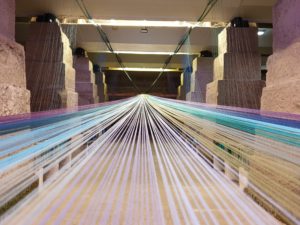
Soundscape and Japanese Links
Seiko also created a soundscape incorporating sounds from inside different textile mills past and present, including the Tomioka Silk Mill World Heritage Site and Usui Seishi, the largest silk mill in Japan, John Smedley Ltd, and Masson Mills. Seiko also spoke to people who work and used to work in textile mills such as John Smedley Ltd and Belper’s East Mill, and their voices were included in the soundscape as they remembered and mimicked the sounds that the machinery made.
“The art installation was enchanting, thought provoking and well worth a visit. Seiko’s work is inspiring and we loved how she talked about the bobbins being asleep and that she woke them up” private view attendee.
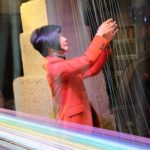
Following a successful launch event and much interest in experiencing Seiko’s installation, the power of nature impacted on her work with intense rainfall leading to high levels of the River Derwent that resulted in flooding of the basement at Strutt’s North Mill. Everyone involved was reminded of the challenges overcome by Jedediah and William Strutt 240 years ago as they were developing their Cotton Mills powered by this sometimes unpredictable source.
The power of Nature
THREAD subsequently took on a new form; where Seiko had created something structured and ordered, the power of the water left a more disordered, chaotic arrangement.
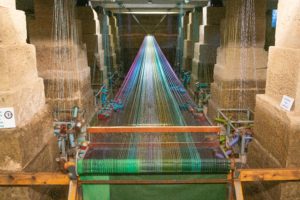
Seiko said,
“I was of course shocked to see with my own eyes the flooded basement, but at the same time I was amazed the power of nature can create such interesting chaos.”
Following the clean up of the basement the installation was once again open to the public and continued to have a powerful impact on visitors:
“Glad that you left it alone so that we can see the change made by nature.”
“Very important to see the two versions of it – still beautiful.”
Cllr Barry Lewis, Chair of Derwent Valley Mills World Heritage Site Partnership Steering Group said
“The installation that Seiko created in the basement was stunning; we were delighted with how the accompanying soundscape invited visitors to experience the work on a more emotional level. It was really special that she also made the connection between the shared textile heritage between Japan and the UK.”
Lantern Lit event with the Community
The second, interconnected concept, “Threading through Communities,” was a lantern lit event for the community. Seiko created a lantern design inspired by the shape of the cotton bobbin, and the Japanese tradition of illuminating paths with lanterns. The lanterns combined cotton thread, including John Smedley’s Sea Island Cotton, paper and other natural materials to thread through each lantern to create beautiful effects.
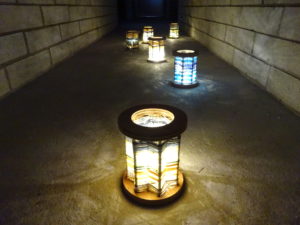
She worked with 500 people from local community groups such as the Belper Clusters Heritage Group, local schools, Church and craft groups to make the lanterns. These were then installed in St Peter’s Church located in a historically significant area in Belper where the workers from the cotton mills lived. This area contains some of the earliest examples of industrial housing in the world.
Visitors were also entertained by poetry readings influenced by the story of the Strutt family, written by Belper Clusters Heritage Group poet, Jeanette Burton and brought to life for the first time by Captive Audience Theatre Company.
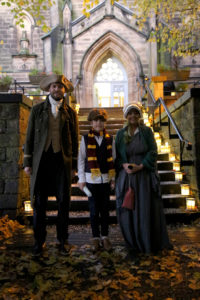
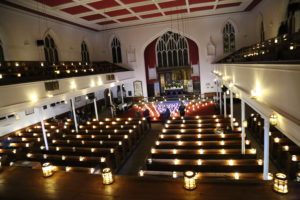
Seiko said, “I felt very privileged to work on this project. Strutt’s North Mill is full of hidden interesting history and heritage. I was especially inspired by how the socially – minded Strutt family built a thriving community in Belper and I wanted to shine a spotlight on the unique areas they built and create an opportunity for communities to get together. I was also fascinated by the World Heritage Site status of Derwent Valley Mills and found many similarities to the Tomioka Silk Mill in Japan which was inscribed as a World Heritage Site in 2014. I hope my installation brought together the unique aspects of those mills, memories and the future of the Derwent Valley. ”
